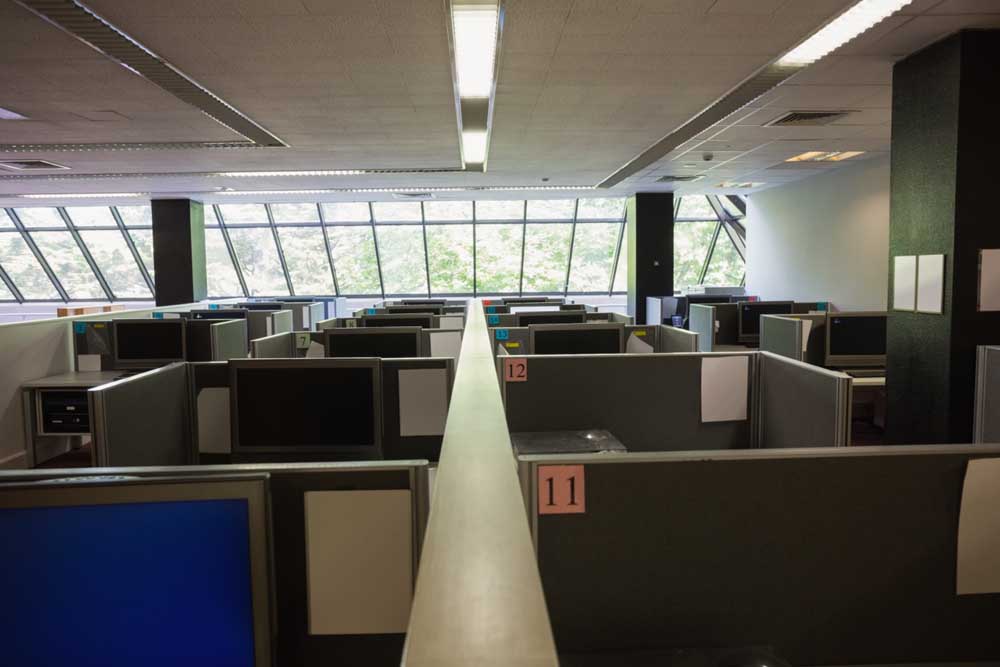Commentary: Unwinding work-from-home won’t cure productivity blues
Published 9:00 pm Wednesday, September 18, 2024

- Cubicle world
Amazon.com Inc. is bringing workers back to the office five days a week from next year in an effort to tackle corporate “bloat” and workplace inefficiencies.
This is part of a broader trend, as companies from PricewaterhouseCoopers LLP to Nike Inc. thin the ranks of middle managers and tighten the screws on remote work to strengthen the beloved trifecta of efficiency, productivity and collaboration after the pandemic. But tech’s water-cooler cheerleaders should be careful what they wish for.
Trending
While work-from-home’s downsides are now increasingly obvious, from a relative lack of promotion opportunities to a brake on collaboration, research suggests that there are also upsides that explain why workers equate it with a 5% increase in their salary, according to Bloomberg Intelligence. Think less time commuting, more time with the kids and more flexibility for those only able to work part-time. Though the pros and cons result in a broadly neutral effect on worker productivity, according to Stanford University economist Nick Bloom, it could have powerful effects on labor-market inclusion and job matching in the long run.
Dropping the hammer on remote work is probably more about making life easier for managers than it is about helping workers be more productive. Business leaders have faced a lot of unknowns since Covid-19; they now worry about the impact on innovation and some feel like they’re “losing control of their people,” says Manchester University professor Bart van Ark. A metrics-driven company like Amazon that’s known for its demanding culture is probably especially worried. Trying to measure white-collar workers’ output remotely is hard and breeds suspicion that they’re just jiggling their mouse around, as seen when Wells Fargo & Co. fired over a dozen employees for “simulation of keyboard activity.”
So while good for downtown city areas, more time in the office won’t suddenly move the needle on the broader economic “productivity puzzle” — the slowdown in labor productivity seen in recent decades, especially in Europe but also to a lesser extent in the US, as an increasingly tech-driven world fails to super-charge growth. Collaboration might spread ideas and bring innovations in artificial intelligence a little closer as Amazon targets “top to bottom” spending in AI, as my colleague Dave Lee has written. But it’s far from guaranteed to be a bonanza. Economist Daron Acemoglu’s skeptical take is that AI may produce a “nontrivial but modest” 0.71% increase in total factor productivity over 10 years.
It may be that what’s best for productivity growth in the long run requires something else entirely: A more competitive environment for tech.
Two articles on productivity published by the International Monetary Fund suggest big tech firms aren’t as effective as they could be in spreading innovation for reasons other than remote work. Yale University’s Michael Peters writes that dominant companies are holding back the business dynamism that creates and spreads new ideas: U.S. firms are on average larger, older and more shielded from competition than they were in 1980, discouraging entrants. That also slows down the reallocation of workers as labor’s share of the economy falls, especially in an industry like tech where superstar firms like Amazon or Alphabet Inc. have thrived. Trying to fix this might mean exactly the kind of tough antitrust enforcement by the Federal Trade Commission that Amazon is contesting.
And University of Chicago’s Ufuk Akcigit suggests that tech firms are plowing resources into maintaining dominance rather than the next tech revolution, whether through innovation-stifling hiring or lobbying to protect market share.
Trending
If more innovation fails to emerge from the tech world’s combination of workplace collaboration and AI-solutionism, a little more corporate competition in the name of productivity might be the next thing we should try.








